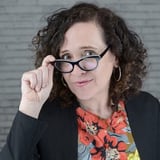Summary
Design groups are no longer fringe in large corporations. We’ve grown up, and our numbers have multiplied; which is exactly what we wanted. However, we now face the challenge of integrating—at scale—with our organization’s cultural and operational fabric. Understanding which stakeholders are most needed to support our DesignOps ambitions is a great place to start garnering influence and yielding intended outcomes. Relationship maps are a powerful tool to humanize the process and chart the course.
Key Insights
-
•
Designers have evolved from individual contributors to system designers influencing company-wide processes and are now present in executive leadership, as exemplified by Kristen Skinner at Capital One and Maria Gideese at Autodesk.
-
•
Relationship maps go beyond org charts by focusing on informal networks and collaborations essential for getting work done in large organizations.
-
•
Leading design at scale requires cultivating purposeful relationships with people who do not report to you but are critical for success.
-
•
A small, decentralized design practice team can influence hundreds of product teams by leveraging volunteer task forces, as Michael’s 18-person team did at Autodesk.
-
•
Successful cross-company tool adoption depends on identifying mutual benefits for stakeholders, aligning with their values, and managing balanced give-and-take, especially when volunteers contribute their time.
-
•
Integrating design tools with existing engineering workflows and tools like Slack, Sketch, and Abstract helps bridge cultural and operational gaps.
-
•
Single sign-on was a crucial factor to lower friction and enable easy access to the Envision platform across thousands of Autodesk employees.
-
•
Expressing gratitude and publicly recognizing contributors fosters motivation and ownership in large-scale collaborative initiatives.
-
•
Quantitative justification for tool investments requires showing cost savings, scale of usage, and potential ripple effects across product teams.
-
•
Leadership in design at scale involves balancing professionalism with a sense of play to maintain engagement and creativity amidst growing accountability.
Notable Quotes
"Tools have evolved to match our new rules and responsibilities, moving from craftsmanship to communication and collaboration."
"Designers used to be in marketing or engineering teams, now we’re found all around companies influencing processes and pipelines."
"A relationship map is a mashup of a stakeholder map and a strategic plan to understand where to go and how to get there."
"The key ingredient in relationship maps is people; how we work with people will determine our success going forward."
"Designers come across as high maintenance; we’re not understood, and other groups may not have the highest opinion of us."
"We need to integrate with the rest of the company better and increase professionalism without losing our sense of play."
"No one on this project reported to me. I had to get people engaged who didn’t work for me, creating purposeful relationships."
"Single sign-on was going to be really important because I didn’t want any barrier to entry, making the login process seamless."
"Expressing gratitude publicly and privately is crucial in this thankless business, letting others be the heroes."
"Broad likability and broad influence is what we need to focus on as designers to do what we need to do."
Or choose a question:
















More Videos

"A good story that people can retell is key for global communication, even if it distorts a bit."
Adam Cutler Karen Pascoe Ian Swinson Susan WorthmanDiscussion
June 8, 2016

"Knowing your subject matter as a UX leader is just as important as knowing your craft."
Peter MerholzThe Trials and Tribulations of Directors of UX (Videoconference)
July 13, 2023

"Human biases are the real problem behind algorithmic bias, not the algorithms themselves."
Lisa WelchmanCleaning Up Our Mess: Digital Governance for Designers
June 14, 2018

"Policy change is the backbone of effective climate strategies in urban areas."
Vincent BrathwaiteOpener: Past, Present, and Future—Closing the Racial Divide in Design Teams
October 22, 2020

"Psychological safety was far and away the key ingredient for teams being effective."
Brenna FallonLearning Over Outcomes
October 24, 2019

"Treat identities as elastic, not as fixed personas, because people’s needs and roles are complex and changing."
Tricia WangSpatial Collapse: Designing for Emergent Culture
January 8, 2024

"Delivering research in small, lean increments allowed us to iterate fast and reduce bias."
Edgar Anzaldua MorenoUsing Research to Determine Unique Value Proposition
March 11, 2021
"Our brains are terrible at operating only on one type of information, whether object-oriented or context-oriented."
Designing Systems at Scale
November 7, 2018

"Decades worth of agricultural data had to be thrown out because they lacked control groups and statistical rigor."
Erin WeigelGet Your Whole Team Testing to Design for Impact
July 24, 2024















